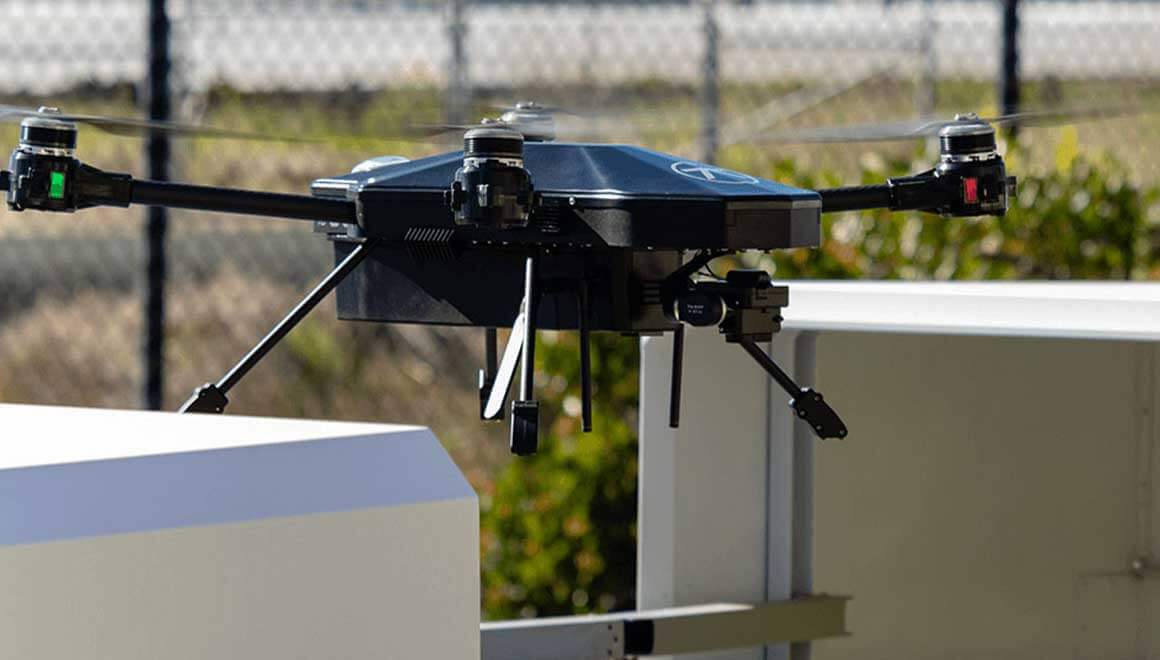LAS VEGAS — Drone experts say the unmanned aircraft systems are the technology solution federal officers on the southern border want to see the Trump administration and Congress adopt.
Officials representing companies in the industry say Department of Homeland Security officials have approached them about implementing this type of flying robot at the border. But first, those federal workers need the go-ahead from Congress.
President Trump has pushed to increase funding for customs and border operations at several points in his tenure. His repeated calls have forced Congress to decide how much to give him and what types of enhancements to fund.
Despite obtaining a few billion dollars for border security operations in the past two years, minuscule amounts have been tossed at the drone and counterdrone industries. Drone experts say lawmakers are to blame for holding hostage the procurement process because they cannot agree on what type of enhancements to make and therefore fund. Republicans are largely following President Trump’s lead on the issue and have tried to obtain billions of dollars of funding to put up a steel, bollard fence on the southern border.
Although lawmakers and the White House reached a deal last fall that no concrete barriers would be erected, some Democrats remain adamant about a technology-only approach and have blocked any additional funding for new or replacement barriers.
Drone officials say the solutions homeland security operators, those on the ground at the border, actually want are not being heard by those in Washington because of the prominent debate among lawmakers. Instead, homeland security employees are taking matters into their own hands and seeking out companies they believe can help them.
They have quietly been in talks with drone companies, sharing what they need on the front lines and learning what capabilities already exist, according to several companies the Washington Examiner spoke with at the recent International Security Conference.
Jack Wu, CEO of Nightingale Security, said parts of the border do need a physical barrier to impede people from entering.
“To us, as a company, it’s not a political issue. It’s really an issue about the effectiveness of the solution. We are part of a solution, not a total solution,” Wu said.
Even if Congress funded a barrier the entire 1,900 miles of the southern border, Wu said that physical wall is not capable of notifying border personnel when people illegally cross or if smugglers are regularly passing through a certain spot.
“Let [Border Patrol] see the live video and make a decision on priority, ‘Where should we go first?’ Or maybe we send more people to one incident location and less to the other,” Wu said.
“When the technology is combined with the fence in places, now you can gather data,” said Wu. “You can start to utilize the data to start seeing a pattern. Once you see a pattern, you can start predicting when that’s going to happen next.”
The drones could each be set to automatically identify the number of vehicles, people, bundles, etc. that are spotted. That information would be immediately forwarded to Border Patrol.
Drones, in that sense, are more flexible in terms of their missions than cameras mounted to a barrier. Wu said a drone every 2.5 miles would give Border Patrol agents eyes up and down the entire boundary. They could even automatically set drones up and down the border to lift off at the same time each day or all at once to get a full picture of what’s going on.
His company makes drones capable of inspecting the ground for tunnels. Those specific machines use thermal cameras to detect varying amounts of soil, an indication a tunnel may be in the process of being built.
Gregg Pugmire is vice president of worldwide sales for Fortem Technologies, a company that goes a step beyond drones and provides ways to monitor the skies for any drone activity as well as the means to take down “nefarious” drones. He said one issue facing Customs and Border Protection, whether it be at ports of entry or the land in between them, is how Mexican cartels are using drones to spy on U.S. operations.
“This is much far sophisticated than a coyote and getting people across,” Pugmire said. His company makes sensors that can alert law enforcement to the most dangerous types of enemy drones: the ones they cannot even hear or see.
Joerg Lamprecht, CEO and co-founder of Dedrone, said the U.S. military has already made investments in drone technology. The problem with just using drones is that U.S. enemies are also using drones, and agents on the border need a way to thwart spying or smuggling by Mexican cartels.
“[T]he same technology is accessible and being used by groups aimed to cause harm, by smuggling in illicit goods and circumventing existing border security. Because of this, government agencies are turning to drone detection to not only track their own drone traffic, but also identify when an unauthorized drone has entered their airspace,” Lamprecht said in an email.
Counterdrone technology includes radars to detect drones in a specific airspace and ways to shoot down those drones, primarily by jamming electronic signals and forcing a drone to land where it is or go back to its operator. Fortem Technologies also makes a net-throwing drone that can respond to bad actor drones.
“Technology doesn’t have a political party, and that’s what the beauty of technology helping with these things are — you could keep people safer,” said Pugmire. “Technology should be agnostic to any political party.”


